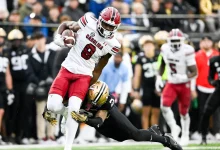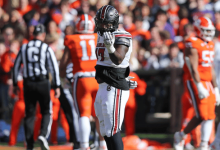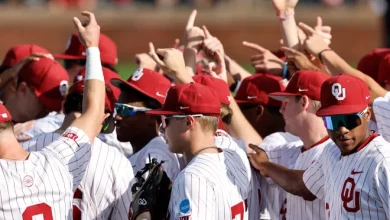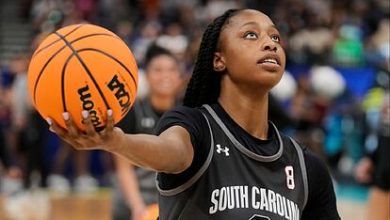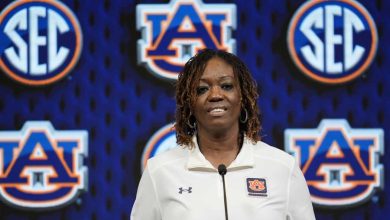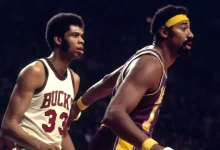Will Cuylle experience growing pains as he rises to the top six Rangers?

Will Will Cuylle Experience Growing Pains as He Rises to the Top Six Rangers?
As the New York Rangers continue to develop their young talent and refine their roster, one player who is generating significant buzz is Will Cuylle. A forward with both skill and size, Cuylle has been one of the team’s most promising prospects, and there are increasing expectations that he will make the jump from the AHL to a regular spot in the Rangers’ top six forwards. While his physicality, two-way game, and offensive upside make him an intriguing option for a more prominent role, the question remains: will Cuylle experience growing pains as he rises to the top six of the Rangers?
The Rangers’ forward depth has been a point of strength in recent seasons, but with the increasing focus on youth and long-term development, Cuylle represents a potential future building block. As he rises through the ranks, his development path will be closely watched by both management and fans alike. While there is a clear path to success for Cuylle, his transition to a top-six role isn’t without its challenges. The pressure to perform at the NHL level, particularly in the top six, is immense, and Cuylle will need to adapt quickly to the increased intensity, expectations, and responsibility that come with such a role.
In this article, we will examine the key factors that could contribute to Cuylle’s potential growing pains as he rises to the Rangers’ top six. We’ll explore his strengths, areas for improvement, the challenges of transitioning from a bottom-six or AHL role to a top-six forward, and how Cuylle’s development will impact both his personal growth and the Rangers’ overall success.
Cuylle’s Strengths: What Makes Him an Intriguing Prospect
Before delving into the potential challenges Cuylle may face, it’s important to understand why the Rangers are so high on him. Cuylle has displayed a combination of skills that make him an enticing prospect with top-six potential.
1. Size and Physicality: At 6-foot-3, 215 pounds, Cuylle is a physically imposing player. His size allows him to win battles along the boards, maintain possession in tight areas, and protect the puck in difficult situations. His physical presence gives him an edge in front of the net, where he can create chaos and screen opposing goaltenders, as well as use his body to drive to the net on offensive plays. The NHL is a fast and often physical league, and Cuylle’s ability to use his size effectively could help him avoid some of the difficulties that smaller players face when transitioning to the NHL.
2. Offensive Upside: Cuylle isn’t just a physical presence — he also has the offensive tools to contribute at the highest level. His slap shot is hard and accurate, and he has a quick release that could catch goaltenders off guard. He also shows great patience with the puck and the ability to make plays in tight spaces. His ability to score and generate offensive chances was evident during his time in the AHL, where he consistently demonstrated his ability to create opportunities for himself and his teammates.
3. Two-Way Play: One of Cuylle’s most significant strengths is his commitment to two-way play. While many young players struggle with consistency on the defensive side of the puck, Cuylle is known for his awareness and responsibility in his own end. His defensive game is well-rounded, and he’s capable of playing on both special teams, whether it’s in a penalty-killing role or as a net-front presence on the power play. This makes him a more versatile option for the Rangers’ top six, as he can contribute to all aspects of the game, including the defensive zone.
4. Work Ethic and Coachability: Cuylle is known for his strong work ethic and his willingness to learn. During his development in junior hockey and in the AHL, he has shown that he is dedicated to improving his game. His ability to adapt to feedback from coaches and take steps to address weaknesses in his game is a trait that bodes well for his potential to succeed at the NHL level. In the Rangers’ top six, coachability and the willingness to learn are crucial in adapting to the nuances of NHL competition.
Given these strengths, it’s no wonder that the Rangers are eager to give Cuylle a chance to rise through the ranks. However, transitioning from being a physical presence in the AHL to a top-six forward on an NHL team comes with its own set of challenges.
The Transition to the Top Six: What Cuylle Will Need to Overcome
Transitioning from the AHL or a bottom-six role to a top-six forward on a team like the Rangers is no easy feat. There are multiple factors Cuylle will need to contend with to make the jump smoothly, and it’s important to assess these challenges and understand how they could lead to growing pains.
1. The Pace of the NHL: One of the most significant adjustments for any young player making the jump to the NHL is the speed of the game. NHL players are faster, smarter, and stronger than in the AHL, and Cuylle will need to adjust to this elevated pace. In the AHL, he may have had more time to make decisions with the puck or space to maneuver, but at the NHL level, those opportunities may be less frequent.
Cuylle’s ability to handle the puck at top speed and make quick decisions under pressure will be tested. In his first few games with the Rangers, we can expect him to occasionally be caught off-guard by the speed and intensity of opposing teams, leading to turnovers or missed opportunities. Adapting to the quick decision-making required at the NHL level is often one of the toughest parts of a young player’s development, and Cuylle’s growth in this area will be key to his success.
2. Consistency at Both Ends of the Ice: While Cuylle is known for his two-way play, he will need to show consistency in both ends of the rink. In the bottom six, players are often asked to contribute defensively while chipping in offensively when possible. However, in the top six, the expectation is higher, with more responsibility in generating offense and maintaining solid defensive positioning against opposing teams’ best players.
Cuylle will be tasked with contributing to the Rangers’ offensive output while also being responsible in his own end. Balancing these duties can be a challenge, as top-six forwards must produce consistently while avoiding the lapses in defensive coverage that can lead to scoring chances for the opposition. Cuylle’s defensive game will likely be tested, especially when matching up against top-tier NHL forwards, and maintaining that balance will be a key challenge.
3. Handling Pressure and Expectations: The Rangers have significant expectations surrounding their young prospects, and Cuylle is no exception. As the team looks to contend for the Stanley Cup, the need for offensive production from the top-six forwards is paramount. This creates an environment where the pressure to perform can be overwhelming for younger players.
For Cuylle, the expectation is that he can step into a top-six role and contribute immediately. While he has the tools to do so, adjusting to the mental pressure of being a key contributor can take time. The mental aspect of the game — managing confidence, handling adversity, and staying focused under pressure — is an area where Cuylle may experience some growing pains as he adapts to playing in the top six for a playoff-contending team.
4. Learning to Coexist with Rangers’ Veteran Stars: Cuylle will be entering a lineup that features established stars like Artemi Panarin, Mika Zibanejad, and Chris Kreider. These players are expected to be the offensive engines of the team, and Cuylle will need to find his role within that framework. Whether it’s playing alongside these players or developing chemistry with new linemates, Cuylle will need to adjust to playing with stars who have different styles of play.
There could be an initial period of trial and error as Cuylle learns to read off his new teammates, adjust his game to their strengths, and develop chemistry in a way that maximizes his own potential and the team’s success. This process may lead to some early struggles, as Cuylle works to fit into a top-six role alongside these key players.
Managing Expectations: The Rangers’ Approach to Cuylle’s Development
While Cuylle will face some growing pains, the Rangers’ development system and coaching staff will be essential in managing his transition. It’s likely that the Rangers will ease him into a more prominent role, giving him time to adjust while providing the necessary mentorship from veteran players like Kreider, Zibanejad, and Panarin. The Rangers are a team with high aspirations, but they also have a strong commitment to developing their younger players at a reasonable pace.
As Cuylle rises through the ranks, he will have the benefit of learning from experienced players who have been through similar developmental challenges. His progress will depend on how quickly he can adapt to the increased competition and how effectively the coaching staff integrates him into the team’s overall system.

